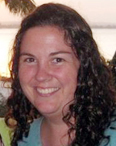 While in a small clinic deep in a rural village, I study a register and see a lot of blank boxes that should contain data. I ask the data clerk why there is so much empty space. She shrugs and meekly explains that she didn’t know how to fill out the specific information. As I talk her through the indicators, I cannot help but think of the need for accessible resources to help people like the data clerk understand what to measure and how.
While in a small clinic deep in a rural village, I study a register and see a lot of blank boxes that should contain data. I ask the data clerk why there is so much empty space. She shrugs and meekly explains that she didn’t know how to fill out the specific information. As I talk her through the indicators, I cannot help but think of the need for accessible resources to help people like the data clerk understand what to measure and how.
Sometimes monitoring and evaluating a program can be concrete. In a service delivery project, for instance, the metrics are usually concrete (did the person receive the medication or not?). Indicators for measuring progress in human resources for health (HRH), however, can seem pretty complex. For example, how do you wrap your mind around increased leadership accountability? Metrics for HRH aren’t as well-known or haven’t received the same level of consensus as have those for other public health areas.
But just as we need to measure progress in service delivery, so too must we find a way to define and show our gains in health workforce strengthening, both for assessing the work and for demonstrating accountability to our donors and stakeholders. Read more »
